Natural History Museum
Type of resources
Available actions
Topics
Keywords
Contact for the resource
Provided by
Years
Formats
Representation types
Update frequencies
Resolution
-
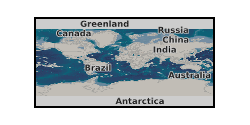
Computed tomography (CT) scans of extant and fossil chondrichthyans, of teeth organized into functional dentitions. These scans were taken on a Nikon Metrology HMX ST 225, in the Image and Analysis Centre, Natural History Museum, London.
-
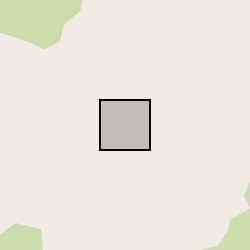
Chemical analysis of pyroxenes and BSE-SEM images from pumices and lava flows from Popocatepetl Volcano, Mexico. Whole rock isotope data from pumices and lava flows from Popocatepetl Volcano, Mexico.
-
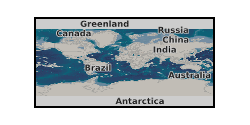
The data consist of several spreadsheets detailing the temporal and geographical distributions of testudinates (turtles, terrapins and tortoises) through time. Occurrence data includes information on taxonomy, geographical distribution and geological age and is limited to Mesozoic-Paleogene taxa. These data were compiled from the published literature on fossil turtles for NERC Standard Grant NE/J020613/1. These data form the basis for understanding the role of changing global climates and geography on testudinate diversity and distribution though time, with the aim of providing historical baseline data for modern conservation biology. The data represent a summary over 150 years of published research on fossil turtles and their relatives and were compiled over a period of 3.5 years during the tenure of a grant. To date they have provided the data used in analyses presented by Nicholson et al. (2015, 2016) and Waterson et al. (2016). Details of the analyses and the results obtained can be found in these papers.
-
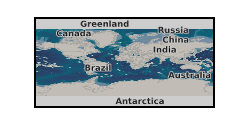
Two datasets containing multiple diversity metrics of planktonic foraminifera. Recent data is from MARGO (Multiproxy approach for the reconstruction of the glacial ocean surface); Eocene data is from NEPTUNE (a relational database of microfossil occurrence records from DSDP and ODP publications), supplemented by literature searches. These data are related to Fenton et al (2016) Phil Trans (DOI: 10.1098/rstb.2015.0224) Data used in Fenton et al (2016) Environmental predictors of diversity in Recent planktonic foraminifera as recorded in marine sediments. The original data is from the MARGO database (Kucera, 2007)
-
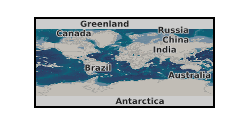
Published paper associated with NERC grant NE/F011091/1. Price, G.D., Twitchett, R.J., Wheeley, J.R., Buono, G. 2013. Isotopic evidence for long term warmth in the Mesozoic. Scientific Reports, 3, 1438. doi: 10.1038/srep01438
-
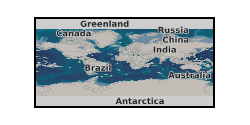
NERC Grant NE/M011488/1 X-ray powder diffraction patterns as xy datasets of limonites from Acoje (Philippines), Caldag (Turkey), Nkamouna (Cameroon), Piaui (Brazil) and Shevchenko (Kazakhstan) laterite deposits; reduced sulphide ore from Thakaringa Mine (Australia) and Captain deposit (Canada); processing residues from the Kevitsa Mine (Finland). The data were acquired during the NERC SoS Minerals CoG3 project between 2015 and 2018 using a PANAlytical X’Pert Pro diffractometer at the Natural History Museum, London, UK. Powdered samples were back loaded into a deep well holder, loaded into the instrument in reflection geometry and data collected using Co Kalpha radiation between 3 and 70 degrees 2Theta. These data were used primarily for phase identification. This may be useful within the mining sector, resource assessment, processing or prospecting, geo- or material scientists and processing engineers / metallurgists. The data were acquired in the Core Research Laboratories, Natural History Museum by the NHM CoG3 team. NERC grant: CoG3: The geology, geometallurgy and geomicrobiology of cobalt resources leading to new product streams
-
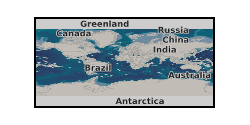
NERC Grant NE/M011488/1 ICP bulk chemistry as wt% oxide or elemental ppm of limonites from Acoje (Philippines), Caldag (Turkey), Nkamouna (Cameroon), Piaui (Brazil) and Shevchenko (Kazakhstan) laterite deposits; reduced sulphide ore from Thakaringa Mine (Australia); processing residues from the Kevitsa Mine (Finland). The data were acquired during the NERC SoS Minerals CoG3 project between 2015 and 2018 by ALS Global using either lithium borate fusion or 4 acid digestion. These data were used to assess bulk geochemistry, and the Co and Ni loading of the resources. This may be useful within the mining sector, resource assessment, processing or prospecting, geo- or material scientists and processing engineers / metallurgists. NERC grant: CoG3: The geology, geometallurgy and geomicrobiology of cobalt resources leading to new product streams
-
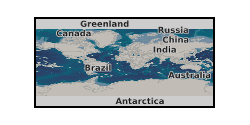
Raw CT scan data for the following taxa (Euparkeria, Scelidosaurus, Lesothosaurus, Hypsilophodon, Herrerasaurus, Adeopapposaurus, Leyesaurus, Pantydraco, Heterodontosaurus, Coelphysis, Columba, Uromastyx), deposited as either .tif stacks or .dicom stacks, together with .vol files. CT reconstructions for each of these provided as .stls and in other file formats and also all files associated with the generation of Finite Element Models for each of these taxa. Reference photographs of specimens also provided where relevant. Scans and models are arranged in folders by taxon on a hard drive, accompanied by a Read Me file giving full details.
-

The incredible success of living birds (>9000 species) results, in part, from their unique respiratory system, which underpins the key evolutionary innovations of high metabolism and flight. This system comprises the lungs and a complex array of interconnected air sacs. The air sacs allow a unidirectional flow of air through the lungs, permitting exceptionally efficient gas-exchange. Extensions from the air sacs penetrate and pneumatize nearby bones, including vertebrae and limb elements, with the associated effect of reducing skeletal mass. In contrast, the closest living relatives of birds, crocodiles, lack air sacs and corresponding pneumatic features. There is now overwhelming evidence that birds are direct descendents of theropod dinosaurs. Many features previously regarded as uniquely avian appeared first among dinosaurs (e.g. feathers, brooding behaviour). The avian air sac system is another such feature: its presence in theropod and sauropod dinosaurs (and pterosaurs) has been inferred on the basis of pneumatic features in vertebrae that are almost identical to those seen in living birds. However, the origin of the air sac system is poorly understood: there is no consensus on whether air sacs and pneumaticity were present in the common ancestor of theropods, sauropods and pterosaurs, or whether they evolved independently in these three groups. Furthermore, possible evidence of pneumaticity has recently been identified in more distantly related Triassic archosaurs, prompting the controversial hypothesis that pneumaticity (and, by inference, air sacs and some bird-like respiratory capabilities) may have been present in the last common ancestor of birds and crocodiles, and subsequently lost in crocodilians. If true, this would require radical alteration of our understanding of the remarkable biology of birds and crocodiles and how they evolved. Understanding the origin of the avian respiratory system is clearly fundamental to explaining the success and diversity of the various archosaur lineages. However, the main alternative hypotheses have not yet been tested. We propose a pilot study to test alternative hypotheses explaining the origin of bird-like respiration. This work is timely, given recent intensive interest in dinosaur and bird respiratory systems, the availability of the research team and a new micro X-ray Computed Tomography (CT) facility at the Natural History Museum. We will determine the presence/absence of pneumatic structures in the vertebrae of selected Triassic archosaurs that lie close to the common ancestry of crocodiles and birds. The identification of pneumaticity will be based on external and internal vertebral anatomy: the latter data were previously unavailable, but will be obtained using CT scans - an entirely novel approach to this problem. The extent of pneumaticity, both within individual bones and throughout the skeleton, will be documented and the distribution of pneumatic structures will be determined by mapping the presence/absence of these features onto current archosaur evolutionary trees. This will permit us to establish: when pneumaticity appeared in archosaurs; whether the acquisition (or loss) of pneumaticity was a single event or occurred on multiple independent occasions; and the evolutionary sequence in which the different components of the air sac system appeared. Demonstrating the absence of pneumaticity in basal archosaurs would falsify hypotheses that a bird-like respiratory system was present in the ancestral archosaur, and support alternative hypotheses suggesting a later origin of air sacs. However, if pneumaticity is identified in primitive archosaurs this project will demonstrate that evolution of the air sac system is more complex than currently assumed and will facilitate future investigations into the origins of avian and crocodilian respiratory systems. This work will be of fundamental importance to palaeontologists, zoologists and physiologists.
-
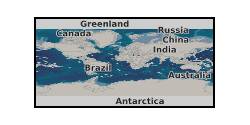
Results files from computer simulations of fluid flow for 3D models of Ediacaran organisms and communities, generated using computational fluid dynamics. Simulations performed using the simulation software package COMSOL Multiphysics. Root folder names refer to initial trials ‘Cylinder Tests’), modern organisms (‘Chondrocladia lyra’), Ediacaran organisms (‘Pectinifrons’ and ‘Pterdinium’), and Ediacaran surfaces (‘Avalon’ and ‘White Sea’ surfaces). Sub-folder and file names refer to simulations performed with different models (e.g., ‘Base’, ‘Filled’ and ‘Flush’ Petridinium models), model orientations (e.g., 0°, 90°, and 180° to the inlet), current velocities (e.g., 0.15, 0.5 and 0.85 m/s), and turbulence models (e.g., Spalart Allmaras, shear stress transport, and large eddy simulation). Further details for Pectinifrons and Pteridinium available in Darroch et al. 2022 (https://doi.org/10.1017/pab.2022.2) and Darroch et al. 2023 (https://doi.org/10.1016/j.isci.2023.105989), respectively. Files can be opened with COMSOL Multiphysics (www.comsol.com) versions 5.6 or 6.0 and above.
 NERC Data Catalogue Service
NERC Data Catalogue Service